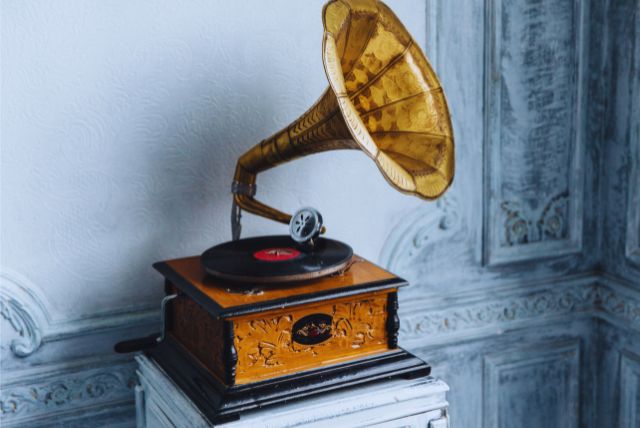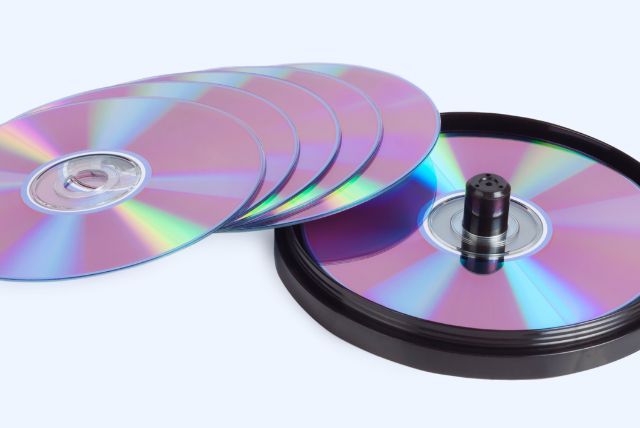One day, my niece came to me and asked if I could help her with her school assignment. It was an essay on “When was the record player invented and by whom?”. As turntables and record players are my favourite things to discuss, I immediately agreed to help her with her homework.
In the 19th century, Thomas Edison invented the first phonograph (record player). This fully working model could record sounds and play them back. Since then, this music marvel has evolved so much that it has become an important part of every audiophile and record collector’s household.

Record players have a rich history that we will discuss in the further part of the blog. So, stay tuned!
Origin of the record player
The first version of a record player, known as a phonautograph, was created by Edouard-Leon Scott de Martinville in 1857 in France. It could engrave airborne sound on a piece of paper but lacked one important thing: a mechanism to play the sound back.
Due to this limitation, it was mainly used in lab settings for research purposes.
When was the record player invented, and by whom?
Thomas Edison invented the first phonograph in 1877 at the Menlo Park lab. Edison’s phonograph used a cylinder wrapped in tin foil and a needle to record sounds.
To record the sound, the person had to shout some words at one side of the cylinder while rotating the cylinder with the hand. The sound generated would then vibrate or shake the needle, thus creating a line or groove on the surface of the tin foil.
After that, the needle could playback what was recorded in grooves, and that’s how the very first phonograph functioned.
Later, Alexander Graham Bell altered Thomas Edison’s model by adding wax to record sounds. The new altered version was known as a graphophone.
Invention of gramophone

In 1887, Emile Berliner, a German-American inventor, patented a device called a gramophone that used a flat disc instead of a cylinder to record sound. The discs were made of shellac, and this was the point when records became important for playing music.
The invention of the gramophone resulted in the mass production of recordings, as discs could easily be replicated using moulds.
Commercialization of record players
Berliner’s gramophone laid the foundation for record players. In 1895, he founded the Berliner gramophone company in the United States, which was later renamed Victor Talking Machine Company.
The Victor Talking Machine became the leading manufacturer of record players in the early 20th century, introducing this machine to the masses.
Gramophones were popular until radio came into existence. Radio didn’t completely decrease the demand for record players, but it did steal the limelight for a while.
Introduction of electrical record players
1906 was the year of electrical record players. Victor Talking Machine introduced a new record player that could run on electricity, eliminating the need for manual hand rotation and providing more consistent playback.
In 1925, with the introduction of electrical recording techniques that further improved sound reproduction, turntables became an integral part of every household worldwide. Hence, record player sales remained pretty good until the 30s and 40s but didn’t reach the tipping point until a few decades later.
The Golden period
The early 1960s and 1970s were the golden years for record players. DUAL launched the very first turntable with stereo playback, and the high-fidelity sound reproduction encouraged more people to add a turntable to their households.
The automatic high-fidelity was the reason why the turntable became so popular in the early ’60s.
It was an era when everybody was totally obsessed with record players. Hip-hop DJs used turntables in a unique way, connecting audio mixers and scratching the disc surface along the needle while creating unique tunes out of the songs. The practice is still prevalent by modern-day artists to this day.
Direct competition from Compact discs

With the introduction of CDs in the 1970s, vinyl records faced direct competition. It was easier to create multiple copies of CDs than vinyl records. This affected record player sales for a while until the early 2000s when vinyl records made a comeback. According to enthusiasts, CDs lacked the warm analog sound that vinyl records could offer.
Hence, with the increased demand for vinyl records, the demand for turntables also increased rapidly.
Final beat
The record player is one of the greatest inventions humans have made. It made it possible to record and play the music of great bands like the Beatles.
With more and more people opting for vinyl records instead of digital media, turntables have already seen increased demand in the 21st century. Many audiophiles believe that vinyl records played on turntables sound much better than digital media, and as a vinyl enthusiast myself, I can’t disagree with them.



I was extremely pleased to find this web site. I need to to thank you for your time just for this fantastic read!! I definitely appreciated every part of it and i also have you saved as a favorite to check out new things on your site.
Thanks for the kind words, Ityama. 🙂
hi